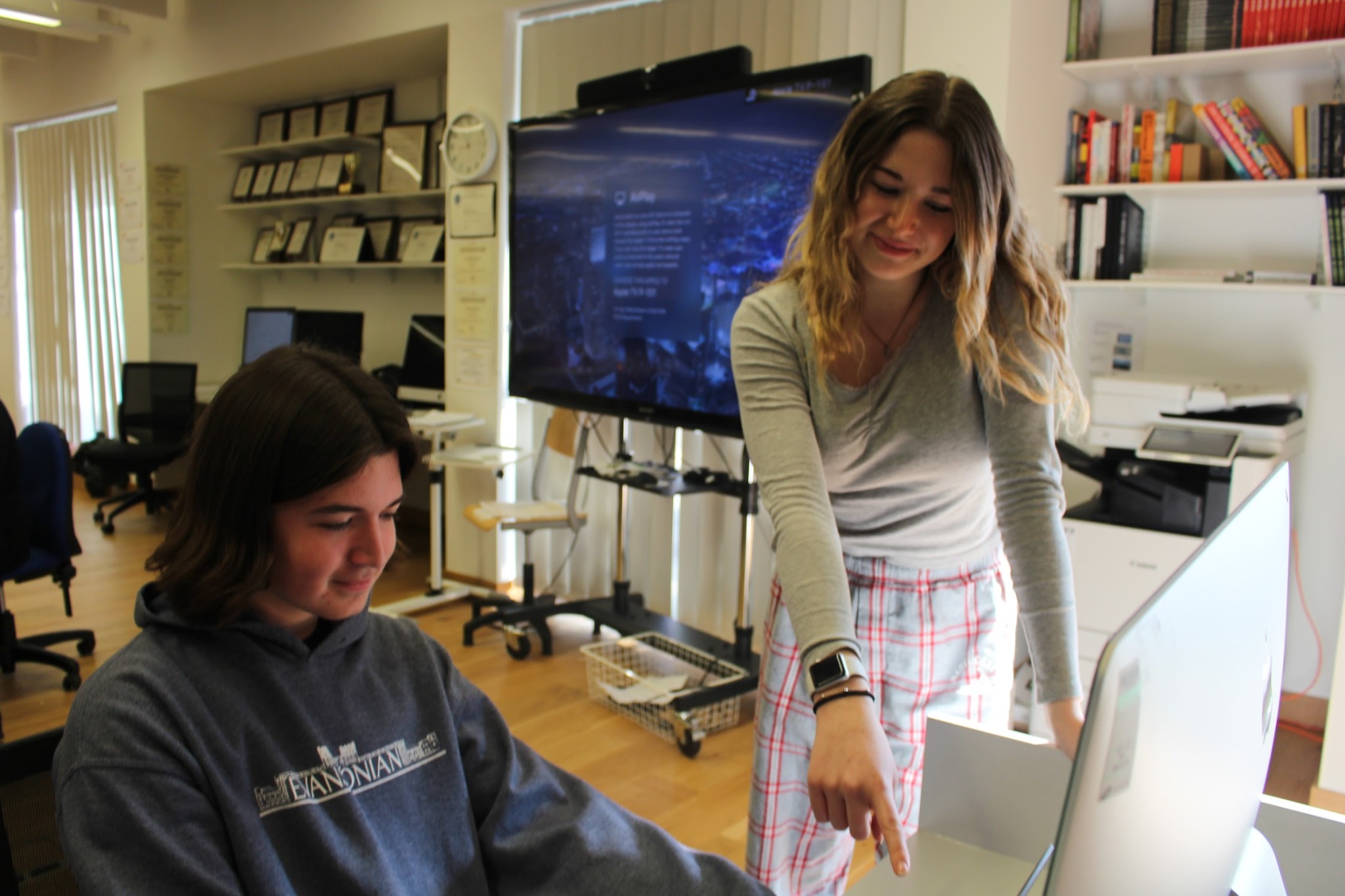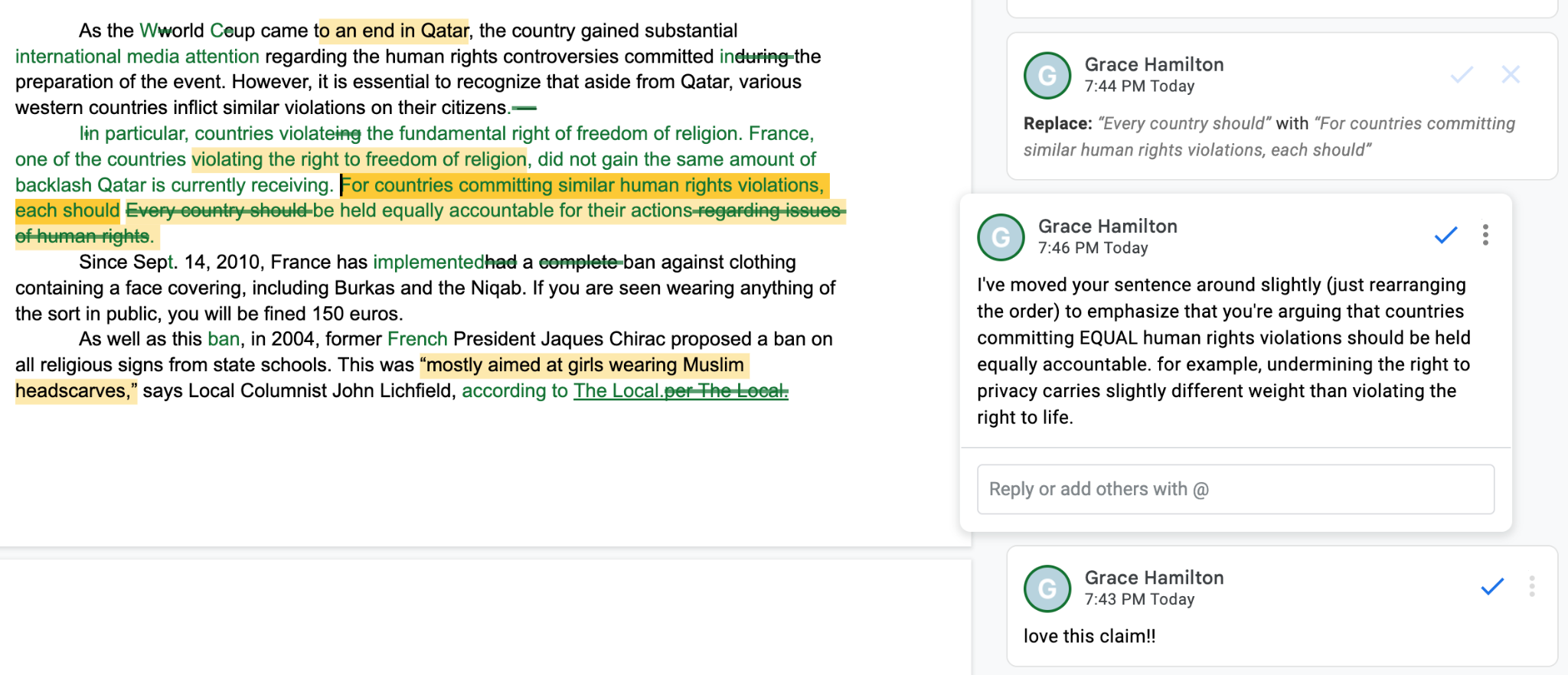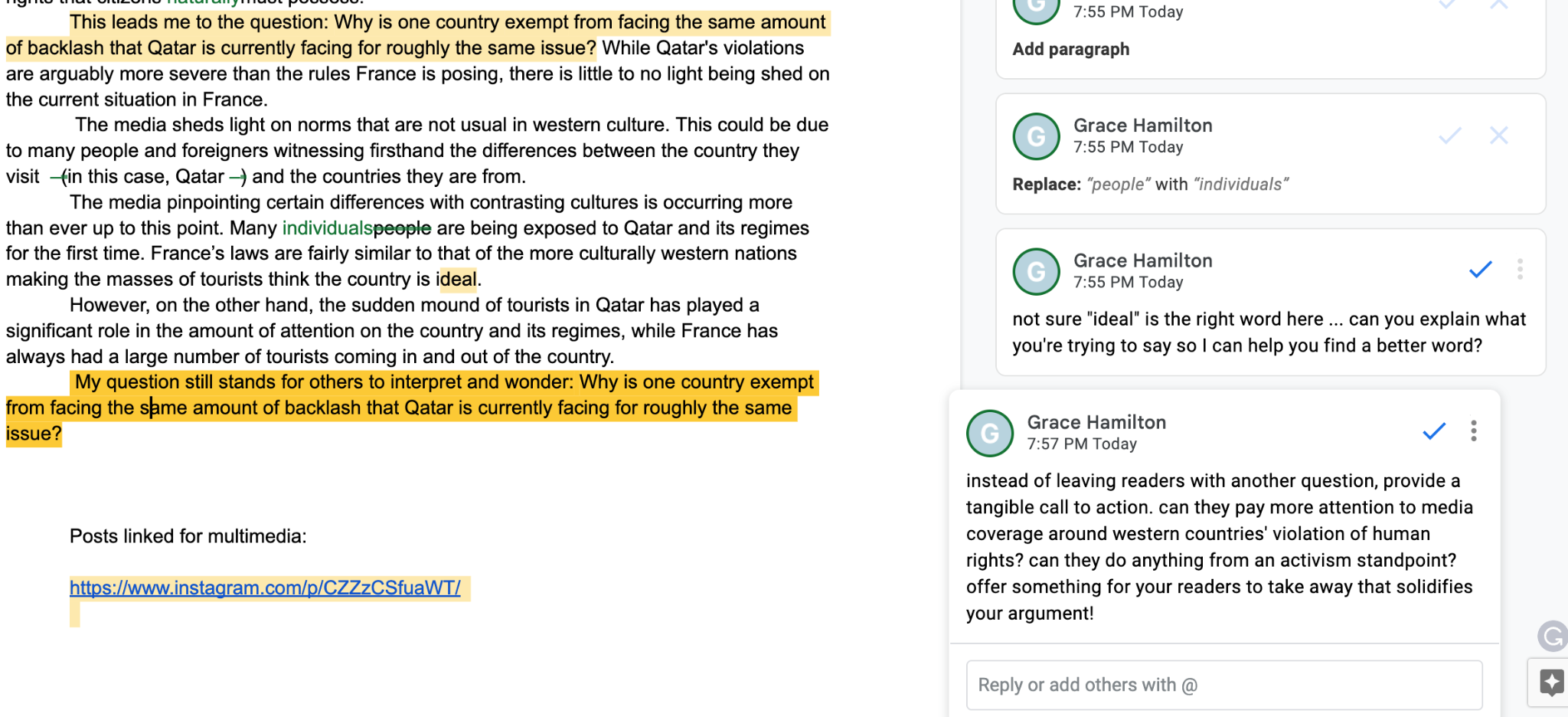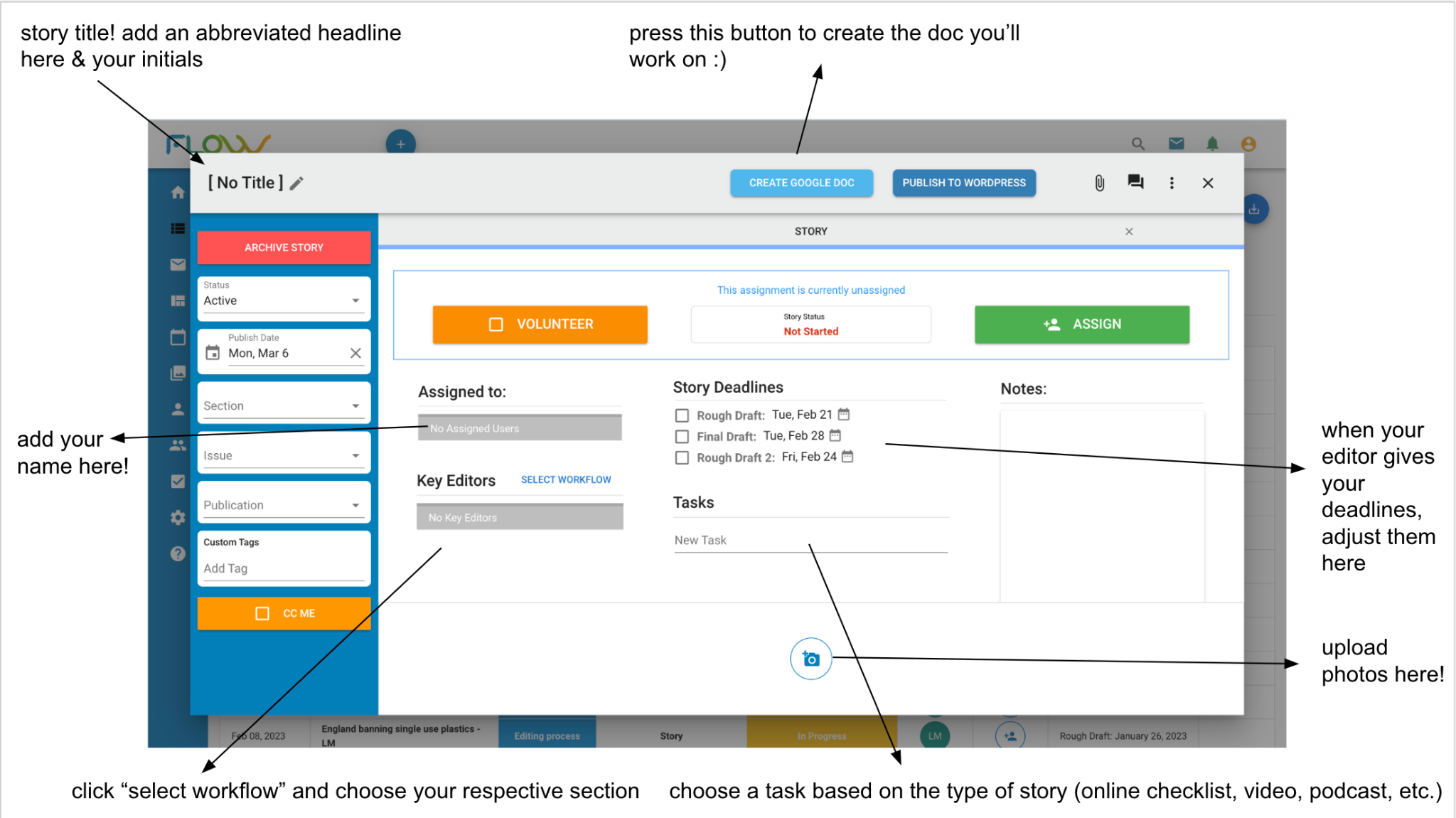

To effectively edit, I first had to learn to write – The Standard way. From learning about the inverted pyramid to the sometimes ridiculous rules of AP style, I immersed myself in these journalistic practices from the get-go. Now, I work to pass on these skills to reporters who are just like freshman me. As an editor, my overarching goal is growing each story to its full potential and helping reporters learn how to effectively approach the reporting process as a whole.
To ensure that expectations were clear for all editors, I created a guide of my personal system when editing each piece. This guide was the culmination of my personal progress as an editor, reflecting my goals to grow each piece and provide critical feedback that helped each reporter learn productive journalistic practices and find their groove in storytelling.
For the print packet process, I similarly created a guide listing each of the elements editors should look out for in their process.
As an editor, one of the first “big picture” elements I look out for in a piece is the diversity of sources. There have been multiple occasions when I returned an article to a reporter, asking them to find sources with different perspectives or identities.
In every piece I edit, I work to spend time with the younger editors on staff to prepare them well for future leadership positions in editing. I’ll take the time to sit down with them and explain my edits. When this isn’t possible, I’ll elaborate on edits I might consider self-explanatory to ensure that they learn instead of just clicking “accept.”
In a recent story I edited, a reporter commentated on the impact of TikTok star Alix Earle's rise to fame. When the article reached me, it had only a few sentences of real opinion and a whole bunch of fact-listing. In my comment at the top of her piece, I left a big-picture edit to address the issue and explain the importance of including opinion in commentary pieces:

As an editor, my biggest challenge has been avoiding unduly stylistic edits. My role is ultimately to foster a platform elevating a variety of unique, distinct voices. Thus, my intention is to help writers discover their own voice and continually learn and grow, never to put them down.
Through the editing process, I look to expand and elevate distinct features of writers’ voices to strengthen their own writing. I move through a couple of rounds of edits tackling different items, beginning with the big picture before moving to smaller, more niche aspects like AP style, grammar and clarity. Before making an edit, I now ask myself, “Am I making this edit simply because this is how I would say it or because there’s actually something wrong?”
Last year, it was crucial to be transparent with my section editors on this area of growth. As a section, we engaged in conversations in which I shared how I planned to keep my own voice out of pieces to address the problem thoughtfully and responsibly. I now know what to target in the editing process without diminishing the writer’s unique, valuable voice. Instead, I work to draw it out.
In editing, I have made it a personal goal to mentor my section and lead editors in growing the story. What perspectives are missing? How could the piece flow better structurally? How does the story come together as a cohesive whole?
Recently, I edited a piece arguing that human rights violations in Western countries should be treated equally to violations committed in Qatar. Below are a few of my comments aiming to help her grow her piece:
Below are two examples of other stories I have edited, compared from start to finish. The first is an opinion piece about U.S. healthcare and the second a news story about democratic election contention in Brazil.
Our online editing process is extensive, progressing through four editors who each conduct two rounds of editing before we hit the “post” button. Each editor is responsible for a different step of the editing process to support the piece in reaching its full potential. Becuase there are so many editing steps involved, I created a guide outlining the process for all staff to reference:
The print process follows a somewhat similar structure:
I introduced Sno Sites' Flow – the program we use to organize our content and progress through the editing process – to new editors and reporters at the beginning of my time as Editor-in-Chief to facilitate the above publishing process and ensure efficiency.
To streamline communication for editing, I've created both a print and online group chat alongside separate section chats for more specific editing updates. In these group chats, I will often send texts checking in with editors about story progress and giving updates on my own editing progress.




